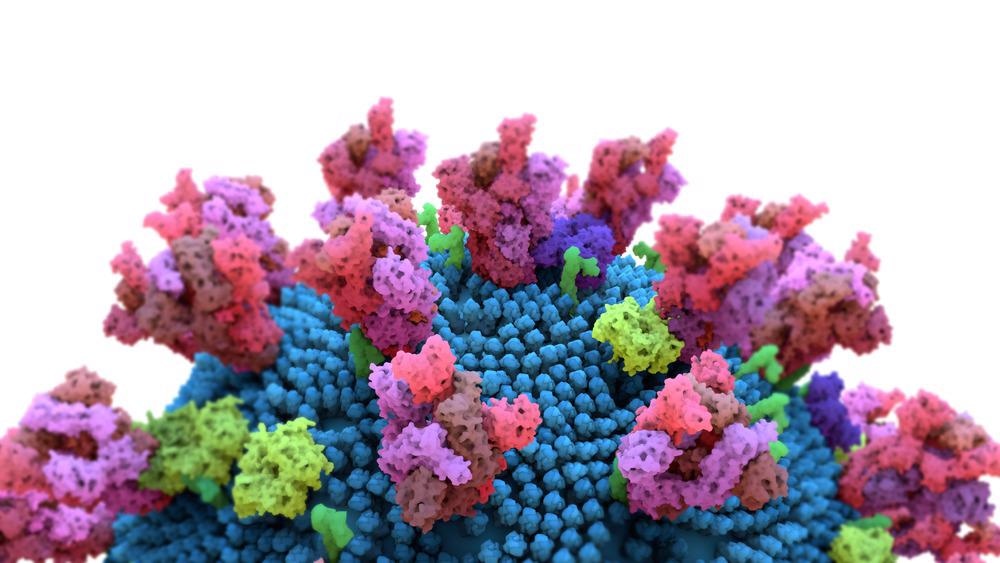A team of researchers recently published a paper in the journal ACS Applied Nano Materials that demonstrated the effectiveness of specific chemically-modified nanohole edges in reduced graphene oxide (rGO) in binding proteins.

Study: Specific Chemical Modification of Nanohole Edges in Membrane Graphene for Protein Binding. Image Credit: Design_Cells/Shutterstock.com
Graphene-Based Biosensors
Biosensors are gaining considerable prominence owing to the rising significance of quantitative or qualitative detection of biological markers and early prognosis of diseases. Such a shift is necessitating the development of accessible, accurate, and rapid techniques.
Biosensors based on graphene, where graphene is used as a transducer or buffer, have attracted wide attention due to the exceptional properties of graphene, such as effect-free high permittivity and high carrier mobility.
Graphene combined with nanoparticles has been investigated as a biosensor in previous research; however, during the development of such biosensors, certain properties of graphene can potentially affect the detection limit of the sensor. Thus, the surface specificity of graphene must be modified for certain molecules to use in biosensors.
Modifying Graphene Nanohole Edges
In this study, researchers initially synthesized rGO nanomembrane (NMG), with nanoholes in the scale of 40-60 nm center-to-center distances and 20-25 nm in diameter, following two distinct approaches that are based on gold nano-islands (Au-NIs) and gold nanoparticles (AuNPs). Later, they performed a specific covalent chemical modification of the nanohole edges in the NMG and evaluated their effectiveness in capturing biological molecules.
rGO-AuNPs were fabricated by depositing an rGO monolayer over a self-assembled AuNP monolayer and then removing the NPs. rGO-Au-NIs were also formed in a similar manner excluding the self-assembled AuNP monolayer, which was replaced by an Au-NI layer.
Ultraviolet (UV) spectroscopy, infrared spectroscopy, and scanning electron microscope (SEM) were used to characterize the deposited layers after and before removing the NIs or the NPs.
The chemical groups in the layers were defined and investigated by Fourier transform infrared (FTIR) spectroscopy.
3-(aminopropyl) triethoxysilane (APTES) was utilized to modify the holes’ edges, while N-ethyl-N′-(3-(dimethylamino) propyl) carbodiimide/N-hydroxysuccinimide) (EDC/NHS) was applied as coupling agents to facilitate coupling between the NMG nanohole edges and a biological moiety such as an antibody.
The successful modification of the NMG edges and the scope of monitoring protein binding were investigated by attaching the angiotensin-converting enzyme 2 (ACE2) antibody to the edges, and subsequently measuring the binding ability of the edges to severe acute respiratory syndrome coronavirus 2 (SARS-CoV-2) spike protein.
A number of control experiments were performed to verify the successful specific binding between the antibody/bioreceptor/ACE2 protein and the target molecule/SARS-CoV-2 spike protein.
Achieving Successful Protein Binding
NMG was successfully synthesized on the rGO layer using AuNPs and Au-NIs. The rGO films appeared as separated wrinkled flakes owing to the deformation after exfoliation and restacking processes, indicating the formation of a high-quality rGO-layered structure nanosheet.
The flakes appeared as a uniformed background after the rGO monolayer was deposited on the glass slide, and demonstrated a 97.7% transparency at a wavelength of 550 nm.
The FTIR spectrum of the GO layer displayed characteristic peaks of hydroxyl, carboxyl, aromatic, carboxy, epoxy group, whereas the FTIR spectrum of the chemically reduced GO or rGO lacked the peaks of oxygen groups that include epoxy and hydroxyl groups. Additionally, the intensities of characteristic peaks of oxygen were reduced in rGO, indicating a high degree of reduction of the GO sheet.
The aromatic groups represented the only remaining peaks at 1585 and 1623 cm-1 in the rGO.
NIs were distributed homogenously with a diameter of 25-35 nm after annealing. A high concentration of hydroxyl groups was observed at the nanohole edges in the NMG after its formation. The absorption peaks associated with nitrogen-hydrogen (N−H) bending and carbon-hydrogen (C−H) swing were observed at 1582 and 1380 cm-1 after the NMG was silanized with APTES, indicating the functionalization of NMG with APTES.
After the functionalization, the amine group was observed in the NMG with a separate peak at 1414 cm-1, which corresponded to the oxygen-hydrogen (O−H) bending vibration of the carboxyl group.
An amide bond was observed at 1533 cm-1 after the application of coupling agents at NMG edges, and more bands at 3280 and 1641 cm-1 emerged after the covalent bond interactions with the ACE2.
The amide bond was created between the carboxyl groups on the antibody and APTES-modified NMG edges owing to the presence of the amine groups at the edges. The intensity of the 1641 cm-1 peak after antibody interaction was higher compared to the peak observed in the NH2-NMG, indicating the successful antibody surface functionalization on NH2-NMG.
The FTIR spectra of NMG and rGO were measured by modifying and activating both of them with APTES and EDC/NHS. No change in peak positions was observed in rGO. However, the intensity of the amide bond increased substantially in NMG, indicating the specificity of protein binding only to hole edges and not to the surface.
Real-time binding measurements demonstrated an affinity constant of 0.93 × 109 M-1 and a dissociation constant (KD) of 1.08 nM.
Taken together, the findings of this study demonstrated a versatile and robust mechanism to perform specific modifications of NMG edges to use NMG as a real-time highly sensitive biosensor.
Reference
Samir, M., Salah, D., Donia, S. and Kasry, A., (2022) Specific Chemical Modification of Nanohole Edges in Membrane Graphene for Protein Binding. ACS Applied Nano Materials,.https://pubs.acs.org/doi/full/10.1021/acsanm.1c04390
Disclaimer: The views expressed here are those of the author expressed in their private capacity and do not necessarily represent the views of AZoM.com Limited T/A AZoNetwork the owner and operator of this website. This disclaimer forms part of the Terms and conditions of use of this website.